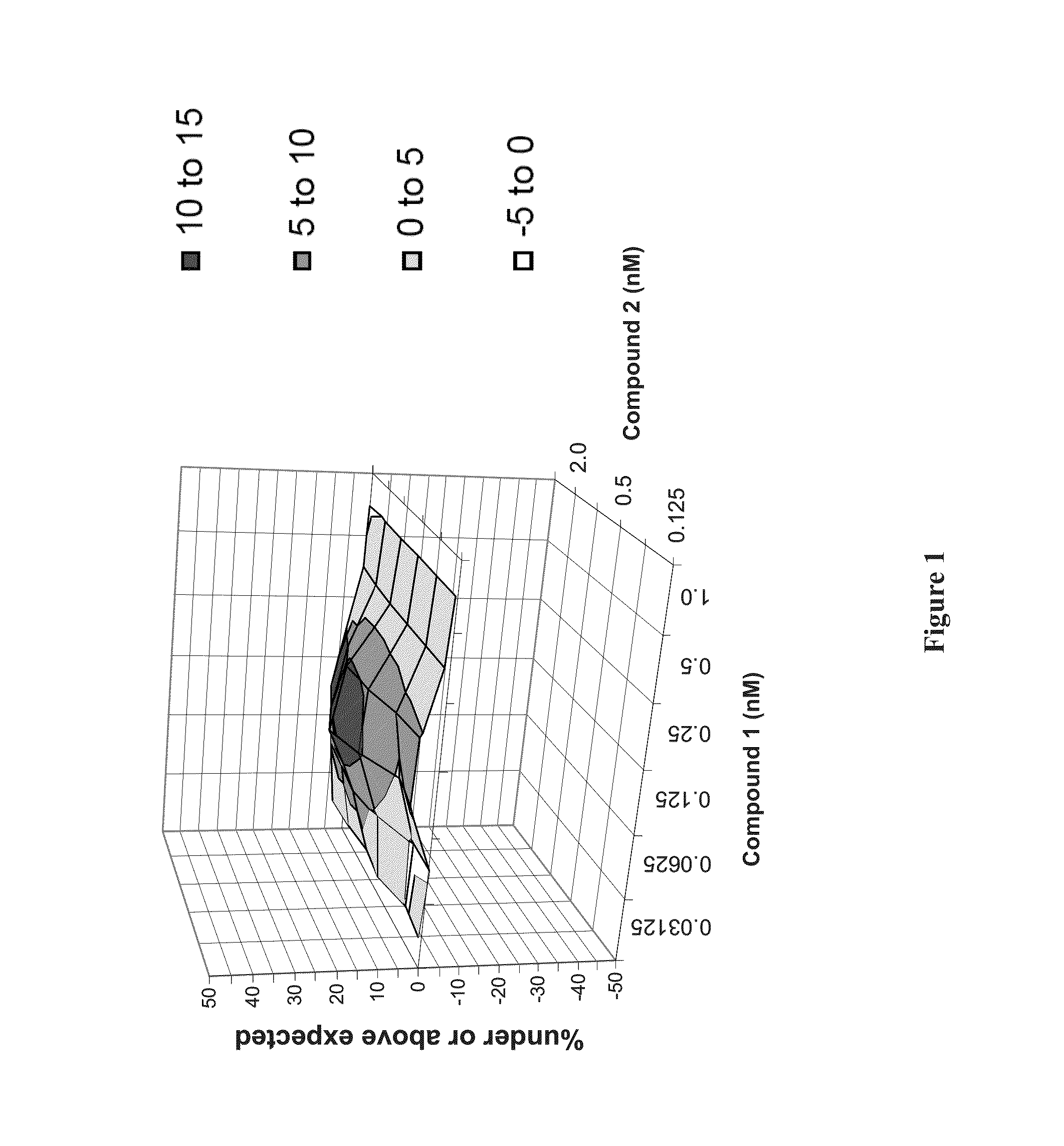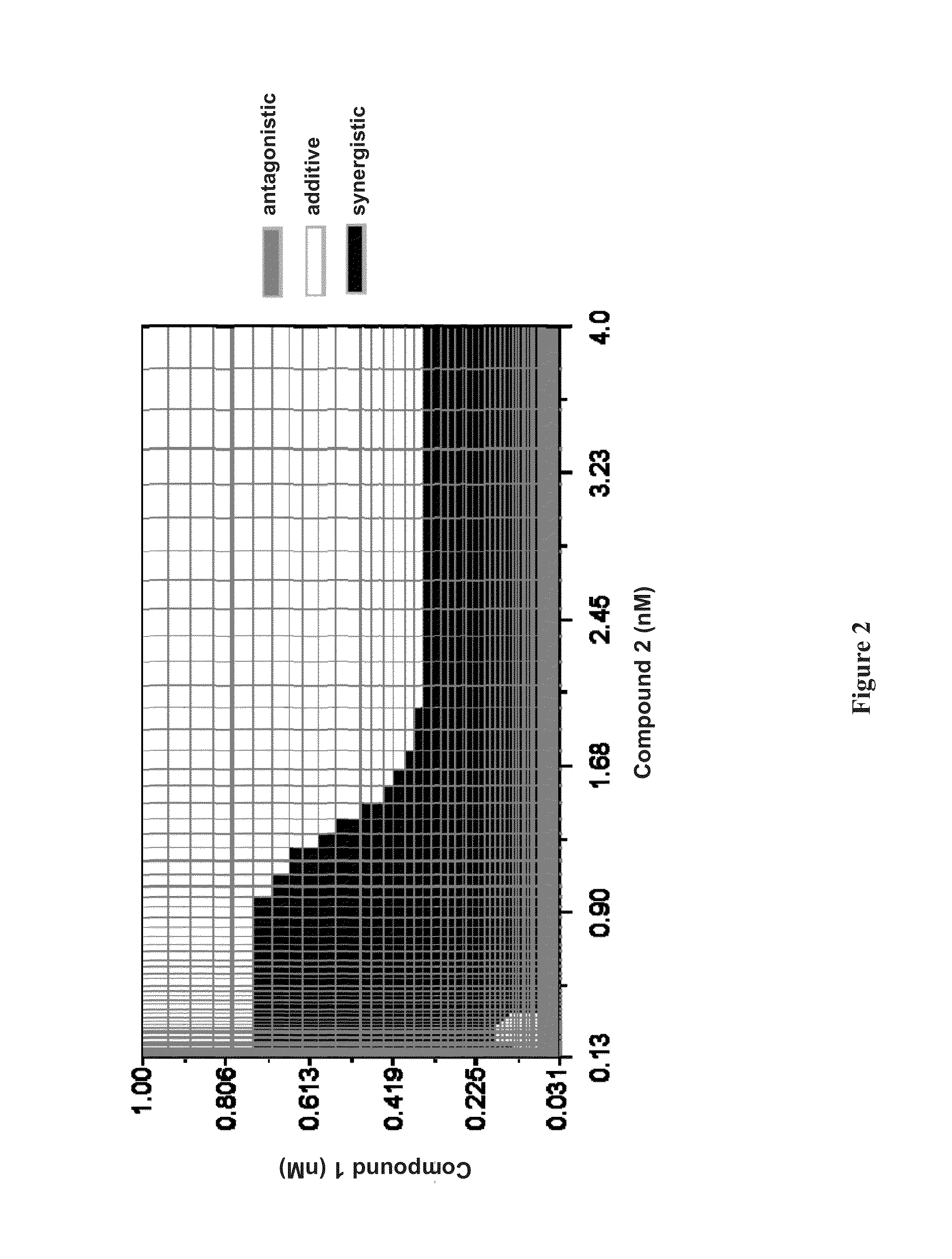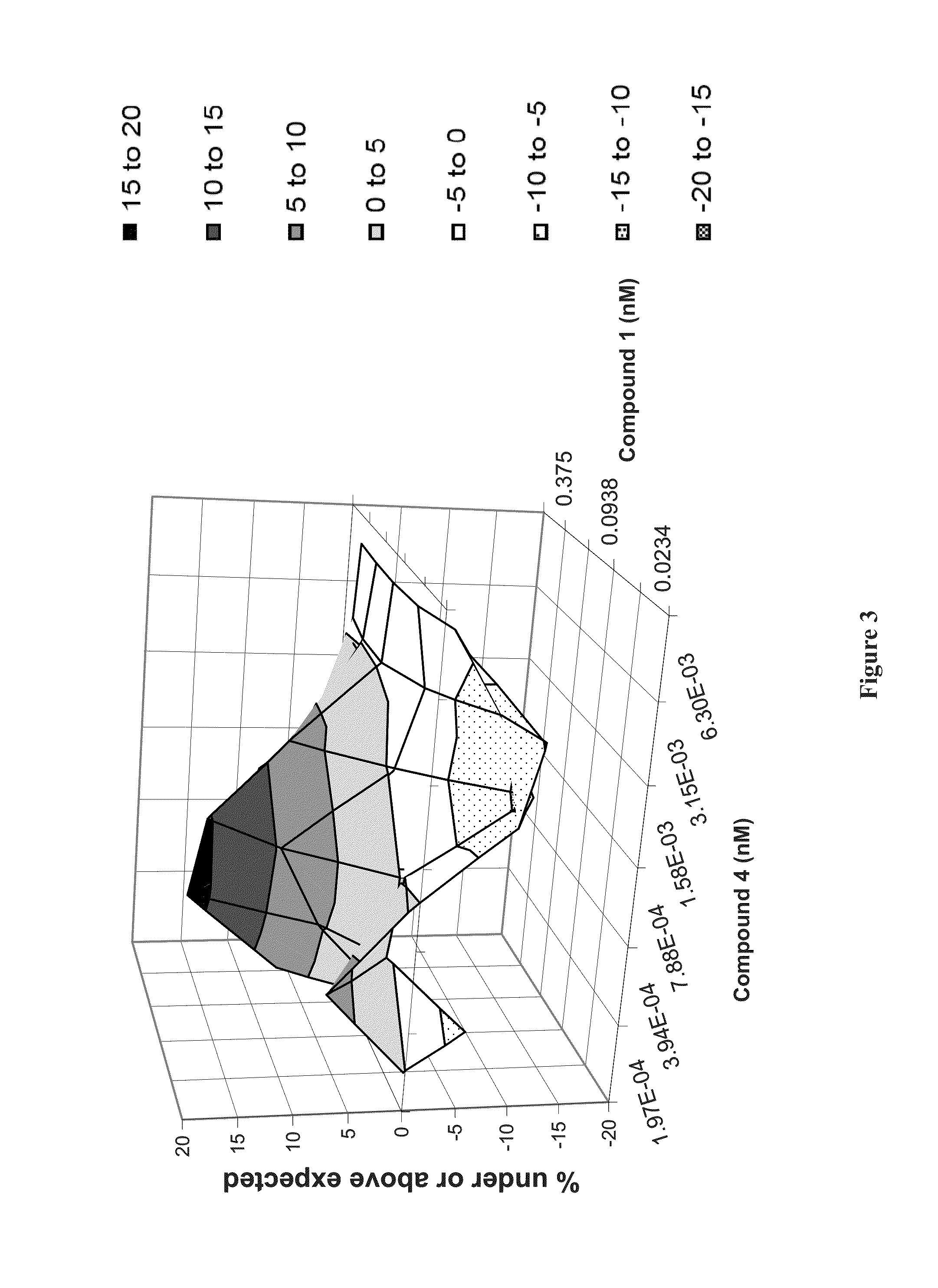Methods for Treating HCV
a technology of hepatitis c virus and treatment method, which is applied in the direction of heterocyclic compound active ingredients, biocide, instruments, etc., can solve the problems of insufficient viral elimination from the body, substantial limitations in efficacy and tolerability, etc., and achieve the effect of improving the pharmacokinetics or bioavailability of one, and avoiding side effects
- Summary
- Abstract
- Description
- Claims
- Application Information
AI Technical Summary
Benefits of technology
Problems solved by technology
Method used
Image
Examples
example 1
Synergistic Concentrations of Compound 1 and Compound 2 in Genotype 1b HCV Replicon Assay
[0192]Examples 1-3 are for illustration and do not limit the scope of this disclosure in any way. Not to be bound by any theory, the unexpected synergistic effects from combining different classes of HCV inhibitors (e.g., a combination of a protease inhibitor (such as Compound 1) and a polymerase inhibitor (such as Compound 2), or a combination of a protease inhibitor (such as Compound 1) and a NS5A inhibitor (such as Compound 4)) may contribute to the effectiveness of the short-duration, interferon- and ribavirin-free therapies of the present technology.
[0193]Materials:
[0194]A replicon cell line was derived from the human hepatoma cell line Huh7. It was derived from HCV genotype 1b (Con1), and is a bicistronic subgenomic replicon, essentially similar to those described in Science 285(5424):110-3 (1999). The first cistron of the construct contains a firefly luciferase reporter and a neomycin pho...
example 2
Synergistic Concentrations of Compound 1 and Compound 4 in Genotype 1b HCV Replicon Assay
[0213]Materials:
[0214]The replicon cell line was derived from the human hepatoma cell line Huh7. It was derived from HCV genotype 1b (Con1), and is a bicistronic subgenomic replicon, essentially similar to those described in Science 285(5424):110-3 (1999). The first cistron of the construct contains a firefly luciferase reporter and a neomycin phosphotransferase selectable marker. Replicon cells were maintained in Dulbecco's Modified Eagle Media (DMEM) containing 100 IU / ml penicillin, 100 mg / ml streptomycin (Invitrogen), 200 mg / ml G418 (Invitrogen) and 10% fetal bovine serum (FBS) at 37° C. and 5% CO2.
[0215]Replicon Cell Culture:
[0216]Replicon cells were seeded at a density of 5000 cells per well of a 96-well plate in 100 μl DMEM containing 5% FBS. The following day, compounds were diluted in dimethyl sulfoxide (DMSO) to generate a 200× stock in a series of 6 two-fold dilutions. The dilution ser...
example 3
Reduction of HCV-Infected Cells with Combinations of Therapeutic Agents 1, 2 and 4
[0233]In order to quantify the frequency of resistant replicon colonies selected by therapeutic agent 1, therapeutic agent 2, therapeutic agent 4, or various combinations of these agents, the stable subgenomic replicon cell line derived from HCV genotype 1a (H77; Genbank accession number AF011751) was utilized. The replicon construct was bicistronic and the cell line was generated by introducing the constructs into cell lines derived from the human hepatoma cell line Huh-7. The replicon also has a firefly luciferase reporter and a neomycin phosphotransferase (Neo) selectable marker. The two coding regions, separated by the FMDV 2a protease, comprise the first cistron of the bicistronic replicon construct, with the second cistron containing the HCV NS3-NS5B coding region with addition of adaptive mutations E1202G, K1691R, K2040R and S2204 I. This HCV replicon cell line was maintained in Dulbecco's modif...
PUM
| Property | Measurement | Unit |
|---|---|---|
| Time | aaaaa | aaaaa |
Abstract
Description
Claims
Application Information
 Login to View More
Login to View More - R&D
- Intellectual Property
- Life Sciences
- Materials
- Tech Scout
- Unparalleled Data Quality
- Higher Quality Content
- 60% Fewer Hallucinations
Browse by: Latest US Patents, China's latest patents, Technical Efficacy Thesaurus, Application Domain, Technology Topic, Popular Technical Reports.
© 2025 PatSnap. All rights reserved.Legal|Privacy policy|Modern Slavery Act Transparency Statement|Sitemap|About US| Contact US: help@patsnap.com



